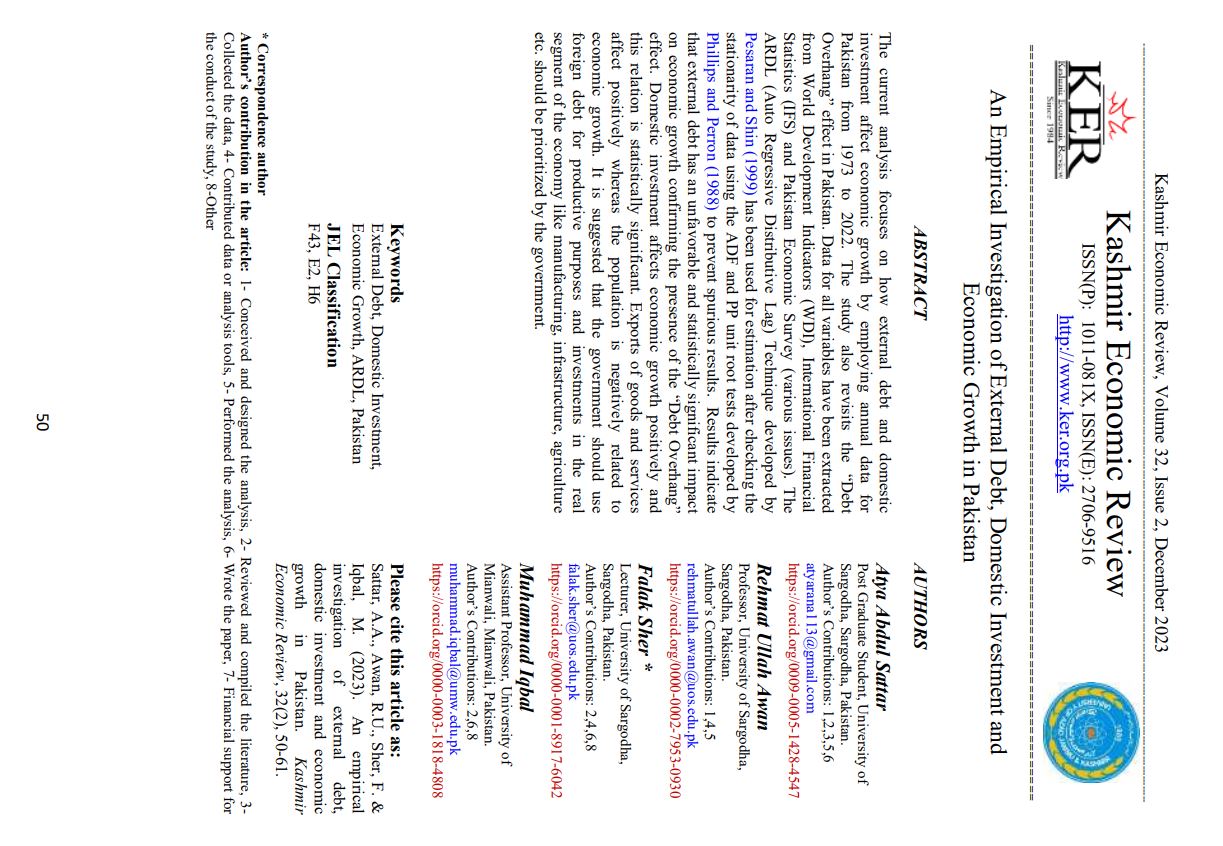An Empirical Investigation of External Debt, Domestic Investment and Economic Growth in Pakistan
محتوى المقالة الرئيسي
الملخص
The current analysis focuses on how external debt and domestic
investment affect economic growth by employing annual data for
Pakistan from 1973 to 2022. The study also revisits the “Debt
Overhang” effect in Pakistan. Data for all variables have been extracted
from World Development Indicators (WDI), International Financial
Statistics (IFS) and Pakistan Economic Survey (various issues). The
ARDL (Auto Regressive Distributive Lag) Technique developed by
Pesaran and Shin (1999) has been used for estimation after checking the
stationarity of data using the ADF and PP unit root tests developed by
Phillips and Perron (1988) to prevent spurious results. Results indicate
that external debt has an unfavorable and statistically significant impact
on economic growth confirming the presence of the “Debt Overhang”
effect. Domestic investment affects economic growth positively and
this relation is statistically significant. Exports of goods and services
affect positively whereas the population is negatively related to
economic growth. It is suggested that the government should use
foreign debt for productive purposes and investments in the real
segment of the economy like manufacturing, infrastructure, agriculture
etc. should be prioritized by the government.
تفاصيل المقالة

هذا العمل مرخص بموجب Creative Commons Attribution-ShareAlike 4.0 International License.

